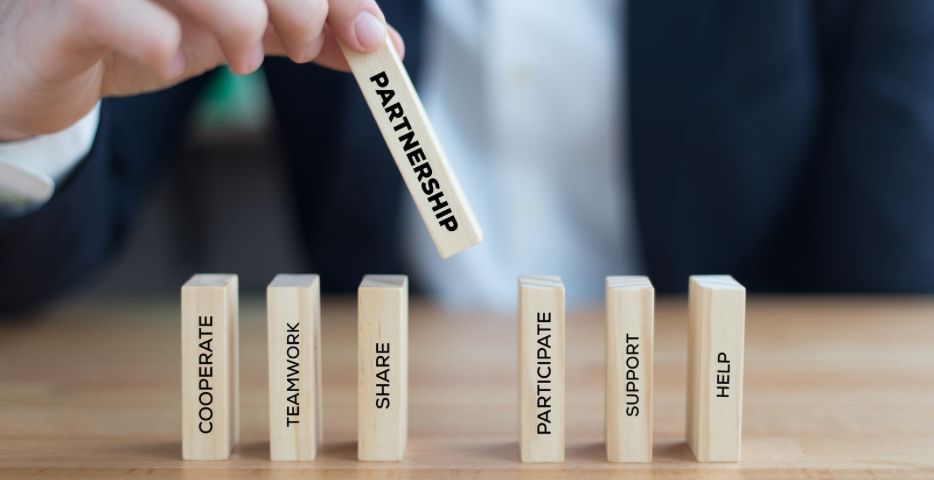
Stories Talk | Presentation Skills and Effective Storytelling
Stories Talk | Presentation Skills and Effective Storytelling
By Mia Kollia
The past decade has seen the meteoric rise of several new technologies that have created new opportunities. This growth has accelerated with the Covid-19 pandemic. With so many disrupted businesses globally, the reliance on building a robust digital ecosystem has skyrocketed, with increased competition and innovation.
Let's look at some advantages of digital partnerships and how to use them best.
A digital partnership is a collaboration between companies that share resources, ideas, and expertise. The goal of the digital collaboration is to create a competitive advantage. As a result, companies can leverage each other's capabilities to serve customers better and grow. To form a digital partnership, companies must first identify areas where they can complement each other's strengths. Next, they need to define clear guidelines and goals, as well as roles and responsibilities. Finally, they must agree to "measure" success and regularly review progress. Companies that create digital partnerships can accelerate growth, stay ahead of the competition and create lasting value for their customers.
History gives us many great examples of existing digital partnerships. For example, one of the longest-running sites on the web, IMDb, created an ongoing digital collaboration with Amazon Prime. to suggest shopping options alongside on-site searches for movies and TV shows. Another great example is low-cost airline Easyjet, which has built and developed a decade-long partnership with Booking.com, allowing customers to book accommodation alongside their flights on a single platform.
It's no secret that we live in a digital world. We rely on digital devices for everything from communication and entertainment to work and school. As our dependence on technology increases, so does the need for healthy digital ecosystems.
A healthy digital ecosystem is guaranteed, secure and private. It's a place where users can control their data and make informed decisions about how their data is used. And it's where businesses are transparent about their data practices and build partnerships with their customers—they don't just want to extract value from them.
Creating a clear strategic plan is essential when developing a digital collaboration. This plan should describe the association's goals and identify each partner's roles and responsibilities. The program should also include a budget and implementation schedule. Let's look at some critical points of digital collaboration.
It is essential to share the profit that both partners will have. That can be achieved by developing a strategic plan that states the partnership's goals and how each partner will contribute to achieving them. In addition, the program should describe how the collaboration will benefit both partners by increasing exposure to new audiences or providing access to further resources.

The strategic plan should promote cooperation and communication between partners and identify and address potential points of conflict. The strategic plan must also be flexible, allowing for changes and adjustments as the partnership evolves. Most importantly, all parties involved should be willing to negotiate with an open mind and compromise to create a plan that meets everyone's needs.
When we think of negotiation, we have in mind haggling over price or trying to get the best possible deal for ourselves. However, effective negotiation is much more than that. Effective negotiation is understanding the needs and goals of our counterpart and finding a way to satisfy both parties.
When negotiating with another business, it is essential to take the time to understand its goals. What are the vision and the mission? What are its weak points? Then we can start developing a plan that will meet the needs of both sides. This process requires a give-and-take that, if done right, can lead to a win-win scenario for all involved.
A solid online presence is more important than ever in today's business world. Unfortunately, many companies need help to realize the importance of digital partnerships. An essential step in any digital collaboration is research. We should take the time to learn about our potential partner and their business. After we've done our research, it's time to plan. For example, what kind of cooperation do we want to develop? There are many different digital partnerships, so choosing the one that best suits our needs is crucial.
After deciding on the type of cooperation, the details are in order. For example, what kind of content will we share? How will each advance the other's business goals? These are just some of the questions we need to answer before we begin our collaboration.
Of course, even the best-laid plans can go awry. That is why it is essential to be flexible and ready to adapt as the situation changes. We should quickly terminate the partnership if our partner does not meet our expectations. On the other hand, if a new opportunity presents itself, we must be prepared to seize it. We can ensure that our digital partnership is constantly evolving and growing by taking a flexible stance.
The most common type is a joint venture, in which two companies share resources and expertise. Another type of partnership is a partnership in which the companies have a common goal. Finally, companies can also enter into licensing agreements, in which one company allows another to use its technology or brand. For example, licensing arrangements are standard in the software industry, where companies license their software to other businesses.